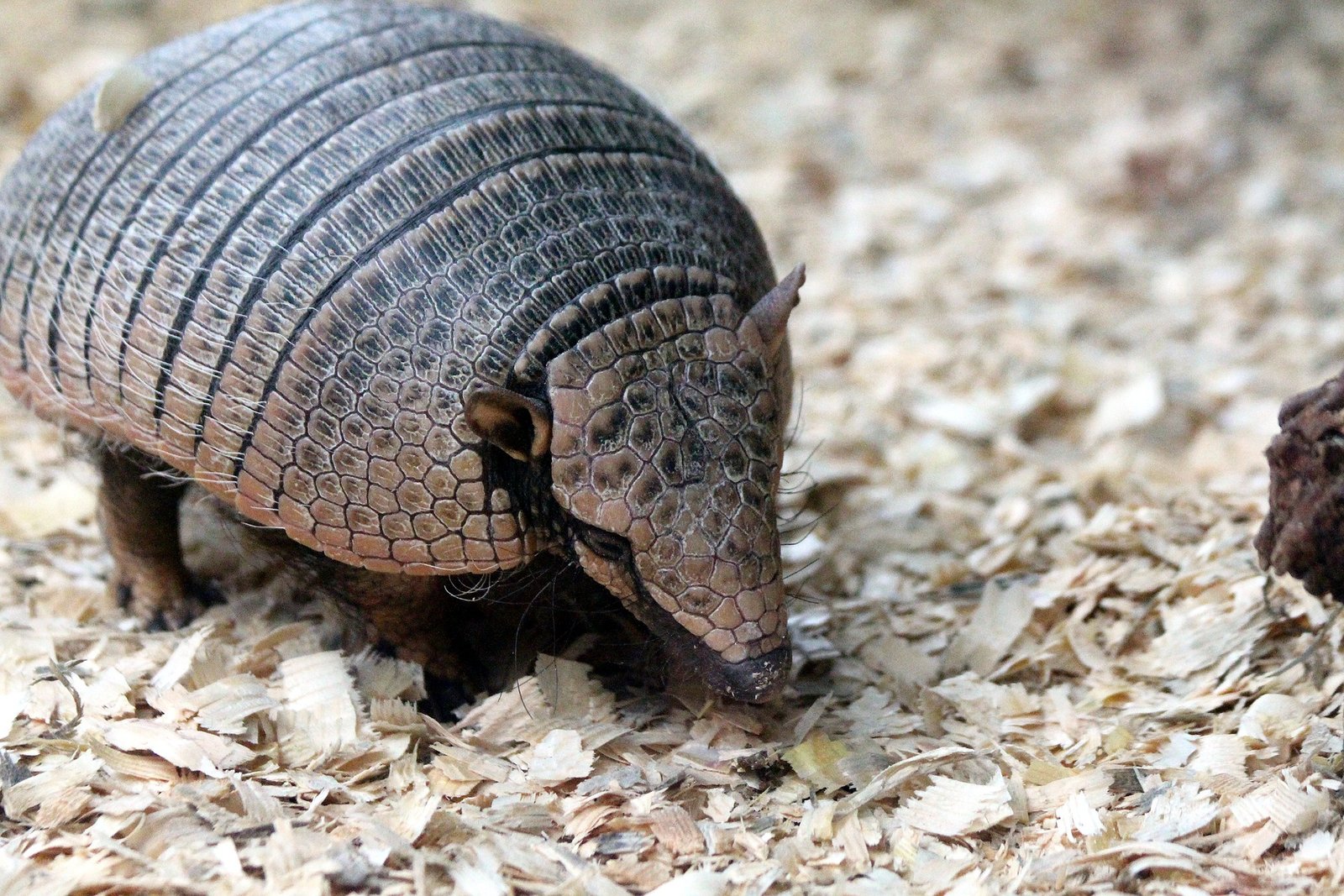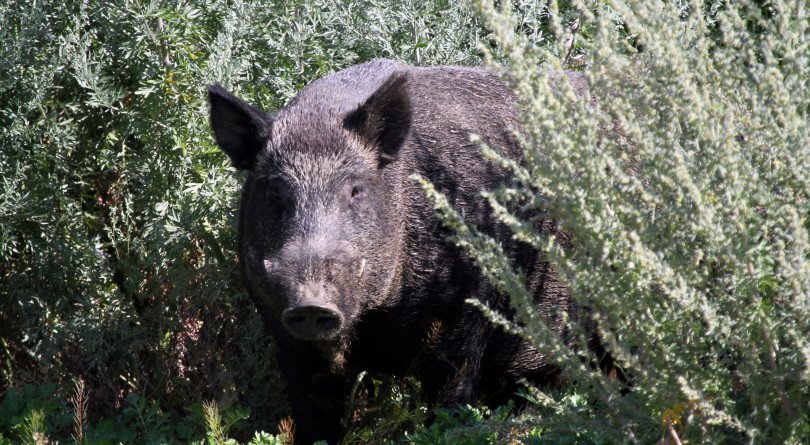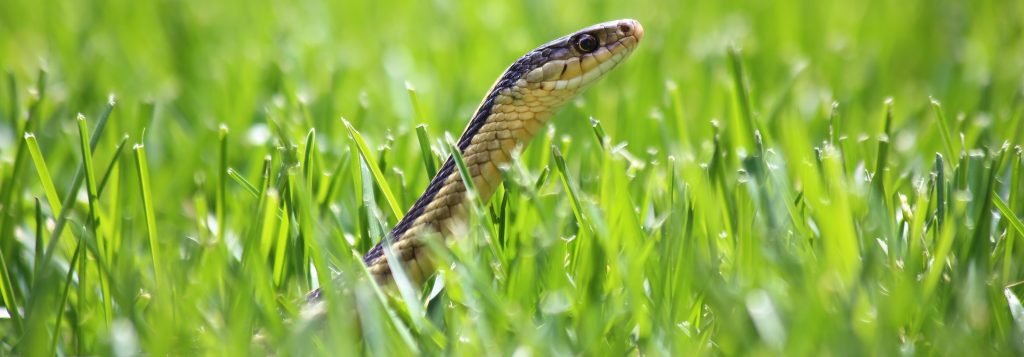Nuisance Wildlife Species
While in the great outdoors, they may seem cute and cuddly scampering around, but nuisance wildlife presents a unique set of dangers if they attempt to make their homes inside or near ours.
Discovering wildlife around your home can be very frightening because animals can become aggressive if they are scared or feel threatened while trapped in an unfamiliar environment. Understanding what animals tend to venture near humans will help homeowners make a decision on wildlife exclusion and removal.
Beavers

The North American Beaver is the largest North American rodent and displays a wide range of physical adaptations to its mostly aquatic lifestyle. While the hind-feet are woven for swimming, the heavily muscled body is shaped more like a marine mammal than like other terrestrial mammals. In addition, steering and propulsion are provided by the characteristically flattened, scaly tail when swimming fast or diving.
The coarse outer-fur coloration varies in color from black to chestnut red. The fur on the animal’s underside is dark grey and helps maintain body warmth in cold waters. The ears and nose are provided with valve-like flaps that can be closed underwater, while the small eyes have a transparent protective eyelid (nictitating membrane).
The American beaver has a thick heavy skull and jaw, needed for strong prominent incisors (for chewing). Large claws on the short forefeet offer dexterity in food handling and facilitate digging as well. There are 24 subspecies of American beavers, but the varying subspecies makes it difficult to pin down geographical limits. 1Go To Source parody.fandom.com -“Canadian Beaver”
Raccoons

A native mammal is a raccoon (Procyon lotor), measuring about 3 feet long, including its 12-inch, bushy, ringed tail. When they walk or run, raccoons have a hunched appearance because their hind legs are longer than the front legs. There are five dexterous toes on each of their front feet, allowing raccoons to grasp and manipulate food and other items.
The Procyon lotor typically lives in forested areas near a water source but have adapted across the U.S. to different environments. Raccoon populations in urban areas have grown due to few predators, human supplied food, and hunting restriction.
Adult raccoons weigh between 15 and 40 pounds, their weight being the result of genetics, age, food available, and habitat location. Male raccoons weigh about 60 pounds on average. Raccoons living in the wild weigh less than urban raccoons because urban raccoons rely on pet food, handouts, and food from garbage bins. Raccoons shouldn’t be cornered because, like any wild animal, they may attack if felt threatened. 2Go To Source wdfw.wa.gov -“Raccoons (Procyon lotor)”
Bats

The majority of North America Bats are insectivorous, have only one young bat per year in early summer, and hibernate in winter. Some bat species are food-dependent on nectar or pollen, and several species undertake moderately long autumn migrations to the south in search of food.
Many bats roost in natural habitats, such as trees, rock crevices, and caves, but many also use buildings, bridges, and mines. After darkness falls, in cities/towns and on fields and lakes, bats forage for food. Bats are often seen swooping around lights where dense clouds of insects attracted to the lights (feeding).
For most North American bats, the average lifespan is between 5 and 10 years, but some have lived for as long as 30 years. They are not like rodents, with which they are often compared, and which are short-lived and prolifically reproduce. Bats appear to have evolved as moderately long-lived, smart creatures with low reproductive potential and specialized senses that allow them to take advantage of the night’s resources, such as echolocation.
North America is home to 4 different families of bat: Mormoopidae, Phyllostomidae, Vespertilionidae, and Molossidae. 3Go To Source umich.edu -“Diversity and Conservation of Bats in North America”
Armadillos

Nine-banded armadillos are covered by outer body armor composed of bony scales and leathery keratinous skin. These scales (osteoderms) provide a covering that is tough but flexible. Typically, the scales are rectangular or pentagonal and develop later than the remainder of the skeleton.
The armor comprises about 16 percent of the body weight. It is divided into three main body coverage areas: a pelvic shield, a shield on the shoulder region, and the back’s distinctive bands. Nine-banded armadillos typically have 9 visible bands, but this number can vary from 8 to 11. A thin layer of skin and hair separates each band. Scales grow and wear continuously but are never entirely shed. 4Go To Source biokids.umich.edu -“Nine-banded armadillo Dasypus novemcinctus”
The average size of the 9 Banded Armadillo:
- Body Size: .75 m
- Tail length: .3 m
- Scale Rings On Tail: 12-15
Moles

Moles are burrowing creatures that measure 5-8 inches in length. Moles have thick bodies with short, velvety fur that conceals their tiny ears and eyes, weighing in at about three to five ounces. Moles live, on average, for two to three years. Moles are well known for the large webbed feet that they use as “paddles” for swimming.
They leave behind unsightly trails that can disfigure and uproot flowers, plants, crops, and shrubs as they move swiftly underground. These trails can be quite dangerous for homeowners as well. Many have run over a mole tunnel and sprained an ankle.
Moles are active year-round, though they tend to be most active in the spring and fall. Moles surface tunnels in soil 6-12 inches deep because that is where most of the food sources are located. They will burrow deeper in the winter for protection from the cold. 5Go To Source britannica.com -“Mole mammal”
Skunks

Skunks are mild-tempered, mostly nocturnal, and only when cornered or attacked will they defend themselves. Even when other animals or humans are nearby, skunks will ignore the intruders unless they are disturbed. The most common North American skunks are the spotted skunk and the striped skunk.
The striped skunk, including its tail, is a domestic cat’s size, ranging in length from 22 to 32 inches. This skunk’s fur is jet black except for two prominent white stripes running down its back. In most lowland areas the striped skunk occurs, preferring open fields, pastures, and croplands near brushy fencerows. It is also seen in some suburban and urban places, especially near open water sources, or its musky odor noticed.
Also known as the polecat, the spotted skunk ranges in length from 14 to 18 inches, including its tail. It has black or grayish black fur, white stripes on the shoulders and sides, white spots on the forehead, cheeks, and rump. The spotted skunk occurs throughout West and South East North America. Similar habitat types are used by the spotted skunk and striped skunk, although the spotted skunk is more likely to be seen in and around woodlands and forests and is not as friendly to invaders. 6Go To Source wdfw.wa.gov -“”Living with wildlife: Skunks
Squirrels

North America is filled with many different squirrel species that inhabit all habitats found in the U.S. Squirrels can be seen anywhere from urban neighborhoods to densely forested areas.
The most common subspecies of squirrels in North America include Grey Squirrels, Fox Squirrels, Red Squirrels, and Flying Squirrels. Each subspecies has its own habitats, habits, and diets. Squirrels are well-known neighborhood pests that often use attics as nesting sites. Once in the attic, the squirrel damage piles up through droppings left behind, chewed wires, and ripped apart insulation. Squirrel species enter attics in search of a safe place to raise their young. They may stay in your home for several months while the offspring are growing up.
Chipmunk

Chipmunks are small rodents with a distinctive yellowish to reddish patch on their rumps. Chipmunks range in size from 4 to 7 inches in length and weigh anywhere from 1 to 5 ounces. The smallest members of the squirrel family are chipmunks, with a maximum length of 11 inches and a weight of 4.4 ounces.
Chipmunks are small rodents with a distinctive yellowish to reddish patch on their rumps. Chipmunks range in size from 4 to 7 inches in length and weigh anywhere from 1 to 5 ounces. The smallest members of the squirrel family are chipmunks, with a maximum length of 11 inches and a weight of 4.4 ounces.
Chipmunks may dig burrows near the patio, stairs, retention walls, or under the foundation of homes. They can weaken or damage the supports in these areas, causing them to collapse. Chipmunks are known for gnawing on and devouring fruits, plants, and vegetables. Your best bet is to defend your yard from the small creatures that lurk on the outskirts in forested areas. If you live near a wooded area, your chances of eradicating chipmunk are slim and will require a professional’s help.
Roof Rat

Roof rats range from dark brown to black in color, and they are 13 to 18 inches long. They reproduce once or twice a month, with each litter comprising about eight pups. These rats can be found from the lower half of the East Coast to Arkansas and throughout the Gulf States. The roof rat can consume nuts, pet food, meat, seeds, tree bark, lizards, insects, vegetables, and even your own pantry items.
Roof rats can transmit various diseases through bites, scratches, physical contact, or food contamination. Rat-bite fever is one of the most common diseases you can get from a roof rat bite or scratch. The key to eliminating an infestation is preventing these rats from invading a home in the first place. The best exclusion option is sealing cracks and crevices around your home through which the rats can enter. Setting at-home traps may catch a few pests, but it won’t eradicate the entire infestation. Contact wildlife removal experts if you suspect your home has a roof rat problem.
Coyotes

Urban coyotes live in North America, generally in metropolitan areas (major cities and their suburbs). Due to food availability and the lack of predators, Coyotes thrive in suburban settings and even some urban regions.
Urban coyotes have a longer lifespan, unlike rural coyotes, and tend to live in higher densities but rarely attack humans. In general, the animals are nocturnal and prey on rabbits, rats, Canadian geese, fruit, insects, and family pets, particularly small dogs and domestic cats. These animals have been known to live close to humans and even den under decks or inside sheds.
Foxes

The most common North American fox is the Red Fox (Vulpes vulpes). The majority of predatory problems are associated with red foxes, although gray foxes can cause problems in some areas. The red fox has a dog-like appearance from its pointed muzzle to its large ears. It has legs that are moderately long and long, thick, soft body fur with a bushy, heavily furred tail. The red fox weighs anywhere from 7.7 lbs. to 15.4 lbs. in North America, with males an average of 2.2 lbs. heavier than females. From the nose to the tail’s tip, the average red fox measures 32 to 45 inches.
The Arctic fox, swift fox, and kit fox are other fox species present in North America. These animals are usually not associated with livestock and poultry predation because they typically eat small rodents and lead a secret life away from humans in remote habitats. However, they may cause site-specific damage problems. 7Go To Source a-z-animals.com -“Fox Vulpes vulpes”
Groundhogs

Woodchucks, also known as groundhogs, are large rodents. They’re also
the largest in the squirrel family made up of 14 different types of marmots and ground squirrels. Most people know the groundhog as a weather forecaster, but his predictions aren’t always accurate. Woodchucks can be found in a wide range of environments throughout the United States. Their preferred habitats are meadows, pastures, crop fields, and yards near a wooded edge. In brushy or weedy areas, they’re common along fence rows or roadways.
Burrowing is one of the groundhogs’ favorite activities. They can excavate five-foot-deep tunnels beneath your home. These holes have the potential to cause a lot of problems. Water damage is just the start of the problems. Because of the groundhog tunnels, water may flow directly beneath your home. This can throw off your foundation’s existing water balance, as well as cause excessive drainage issues in the event of bad weather.
Feral Pigs

Feral pigs, also known as Sus scrofa, are the same species as farm pigs. Early explorers and settlers brought feral swine to the United States as a source of food in the 1500s. Wild pigs are distinguishable by their small eyes, large triangular ears, and a long snout. Their thick coat of coarse, bristly hair, which they can erect along their spine, has earned them the nickname “razorback.”
Wild pigs can carry various parasites and diseases that can endanger the health of humans, livestock, and wildlife. Brucellosis, leptospirosis, salmonellosis, sarcoptic mange, E. coli, and trichinosis are just a few of the diseases that can infect humans. Also, wild hogs are responsible for $1.5 billion in damages in the United States each year. If you have a hog invasion on your property, the longer you allow them to thrive, the more damage they will cause.
Opossums
Opossums are omnivores who eat a wide variety of foods. On average, opossums are 2 to 3 feet long, including the tail, and can weigh up to 15 pounds. Except for the opposable thumb on the back foot, all toes have claws. The opossum can carry things like nesting materials and even hang upside down from a tree branch thanks to its long hairless prehensile tail.
Opossums make their homes in attics and garages, where they can create a cluttered nest. Opossums can carry a variety of diseases, including leptospirosis, tularemia, and tuberculosis. The animals have the ability to use the attic as a toilet, and the turds they leave behind can be quite large. Opossum waste is notorious for stinking up the place and can spread diseases to people living in the home.
Snakes

Snakes are reptiles found primarily in tropical areas of the world. There are about 3,000 different types of snakes, with about 375 of them being venomous. In the United States, there are 126 different types, but only 19 of them are dangerous to humans.
The most dangerous aspect of having snakes on your property is the possibility of being bitten. Most snakes won’t attack unless they feel threatened. Snakes, unlike mice and rats, do not leave a trail of destruction. They often hide for months once they’ve gained access to your home.
Stinging Insects

Intrusive stinging insects can make it difficult to enjoy the outdoors around your home. Yellowjackets, hornets, and bees can be hard to deal with because when a threat is sensed, the colony will attack. No matter what kind of insects have invaded your yard, always practice safe removal practices because these species can be unpredictable.
Insects can pose not only the threat of stinging humans but also the threat of damaging structures. Many insects will form hives on easements of buildings, resulting in tweaked structure support. If left untouched, the hives will grow, and before you know it, thousands of insects will make your home their home.
Yellow Jackets
Such highly aggressive stinging insects develop large, fervently defended colonies. As a result, intruders are often stung hundreds of times and can be swarmed in a matter of minutes. In and around trash piles and garbage cans, these insects are mainly found foraging. They’re also common invaders of picnics or anywhere where food is present in nature.
Bald-Faced Hornets
Such wasps (subspecies of wasps) would be harmless, but only if you could completely stay away from their nests. Several signals, however, can trigger a swarm to attack. These may include getting within three feet of the hive, loud noises, vibrations, nest jostling, or unexpected visual changes in the environment.
When a colony of wasps goes into attack mode, each wasp will inject its venom into the target. When they can not reach the target (for example, if a screen separates them), the bald-faced hornets will squirt venom into the perceived threat’s eyes.
Carpenter Bees
The primary pollinators and common visitors to suburban flowerbeds are carpenter bees. These bees make a show of aggression when threatened but rarely sting. In fact, in many carpenter bee species, the males have no stingers at all. The only real threat posed by carpenter bees is to wood structures; they will bore holes in wood to create egg-laying chambers. 8Go To Source saferbrand.com -“BEE? WASP? HORNET? A GUIDE TO STINGING INSECTS”
References:
- “Canadian Beaver | The Parody Wiki | Fandom.” The Parody Wiki, parody.fandom.com/wiki/Canadian_Beaver. Accessed 19 Jan. 2021.
- “Raccoons | Washington Department of Fish & Wildlife.” Washington Department Of Fish And Wildlife, WDFW, wdfw.wa.gov/species-habitats/species/procyon-lotor. Accessed 19 Jan. 2021.
- Bogan, Michael, et al. “Bats in North America.” University Of Michigan, UMICH, www.umich.edu/%7Eesupdate/library/96.04-05/bogan.html. Accessed 20 Jan. 2021.
- McDonald, K. and J. Larson 2011. “Dasypus novemcinctus” (On-line), Animal Diversity Web. Accessed January 19, 2021 at http://www.biokids.umich.edu/accounts/Dasypus_novemcinctus/
- Musser, Guy. “Mole | Mammal.” Encyclopedia Britannica, American Museum of Natural History, www.britannica.com/animal/mole-mammal. Accessed 20 Jan. 2021.
- WDFW. “Living with Wildlife: Skunks | Washington Department of Fish & Wildlife.” Washington Department Of Fish And Wildlife, wdfw.wa.gov/species-habitats/living/species-facts/skunks. Accessed 20 Jan. 2021.
- Gardner, Keri. “Different Species of Squirrel Living in the US.” Animals – Mom.Com, 19 Nov. 2020, animals.mom.com/different-species-squirrel-living-4989.html.
- A-Z Animals. “Fox (Vulpes Vulpes) | Incredible Facts.” A-Z Animals, 11 Jan. 2021, a-z-animals.com/animals/fox.
- “Bee? Wasp? Hornet? A Guide to Stinging Insects.” Safer® Brand, www.saferbrand.com/articles/guide-to-stinging-insects. Accessed 20 Jan. 2021.
